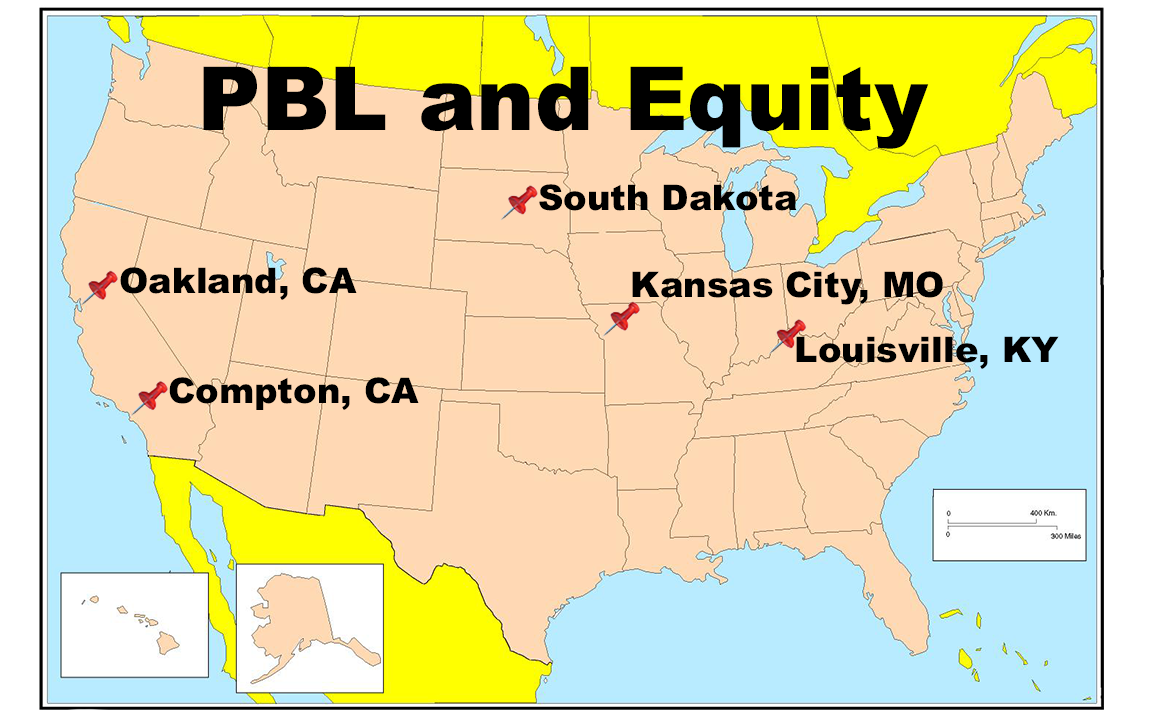
In 2018 I have had the honor of teaching and learning alongside educators across this nation as they utilize PBL as an anchor in their stance to provide all students equitable access to deeper learning experiences. Calling out the disparities their various student populations face, their PBL Units take on contemporary and historical topics in ways that activate, engage, and empower students.
Hands down, my favorite part of this work is being able to support educators individually, as a team, and in workshop spaces to see the benefits of PBL, especially as a leverage tool to dispel opportunity and achievement disparities. This time of the year is dedicated to reflecting on my practice, and I’d like to share with you some of the more compelling and profound examples of how our fellow educators are using PBL to ensure this equity of opportunity.
An ELA teacher’s revelation about EL & PBL
When I was engaging in a coaching discussion with a high school ELA team, one teacher earnestly came to the revelation that her English Learner (EL) students “could actually work towards the same driving question” as students who were fluent English speakers. By going through our workshop, the teacher was able to experience the process by which ALL students can access the same high expectations within her PBL unit. We came to the conclusion that equity could exist in the form of differentiated products, differentiated project processes, and ESPECIALLY in differentiating the scaffolds the EL students received in terms of differentiated language development throughout the project. In this way, the Buck Institute’s English Learner Scaffolds document became a pivotal tool, helping this teacher see the practicality of PBL in fostering equity in instructional practice.
Greenwood Elementary School, Louisville, KY
This school had a whole-faculty study group built around the text Waking Up White and coming together to encourage their students, especially their black males, to feel they are part of the school community. Teachers work with passion to develop projects around guest experts who more closely resemble their students and grew up in the same neighborhoods/community. They work to integrate components of the students’ daily lives and interests. Checking their internal biases via the book and discussions surrounding it, they are intentionally working as a team to ensure true authenticity in their PBL Units.
East High School, Kansas City, Missouri
Along with fellow National Faculty member Jorge Valenzuela, this year I worked with one team of Texas dual language instructional coaches whose methodologies and ideas in turn informed my support for East High School in Kansas City, which serves many new American students. In both places, PBL was THE tool being leveraged as a part of their plan to address opportunity gaps. Teachers in these environments even scaffold the language in which students make their products public. For example, English 9 literature discussions conclude in quarterly “publishing parties” wherein students share their products and solutions in a coffeehouse environment. Physics First students are guided through an exploration of directional terminology prior to digging into vector quantities and force. Content is not diluted or lost in the process and scaffolds are gently removed as students show progression.
Compton Unified School District, CA
This district’s educational technology team is using PBL to foster equity by ensuring that all teachers are provided opportunity and training in delivering high quality instruction that incorporates technology and the 4C’s (Collaboration, Communication, Creativity, and Critical Thinking). The vision is for all of Compton Unified’s students to experience learning in an authentic, real-world-applicable way, espousing the district’s current initiatives.
Centennial High, Compton, CA
One teacher at Centennial High did a project in which students “took over” Compton City Hall! Students recreated an empty informational booth and transformed it into an art exhibit that displayed their posters and projections of videos. Their objective: to analyze the Declaration of Independence and Bill of Rights and interpret the text’s relevancy to their personal stories through art. Opening with a book study of The New Jim Crow, followed by an intense viewing and intentional discussion and writing about the Netflix documentary 13th, the learning experience gave students a voice like never before in their community!
United for Success Academy, Oakland, CA
One team of educators at a middle school academy in Oakland takes on equity in many ways:
- In art courses, students constantly craft pieces which challenge and critique the world around them in a productive, purpose-filled, and meaningful manner.
- Humanities PBL units explore the importance and purpose of midterm elections to then spread the message to their community, to produce educated, informed, and well-rounded healthy voters 3-5 years before they’ll legally even be able to vote! Can you imagine the impact and ongoing ripples this would have?!
- Literature studies which challenge stereotypes and cause students to take an introspective and reflective look into their environment and the media they consume, all anchored in their reading of The Skin I’m In.
South Dakota Indian Reservation school
One more example: At PBL World 2018 I met teachers from a South Dakota Indian Reservation school, who shared with me how PBL is the only way to innovate in an under-resourced environment where the students’ learning has to be authentic or we run the risk of students choosing not to even attend school.
These examples and reflections from the field can go on and on! Each of these educators and teams are dedicated to equity in their schools. They’ve made PBL culturally relevant, empowering, and accessible for all students. Higher order skills for ALL students, opportunities to learn, school climate, student inclusion, and equitable access to effective teaching are all anchored in their PBL practice. In this way, they’re helping ensure equity of opportunity.
What does equity of opportunity look like in your building? It is my hope that these reflections help inspire your practice! Share your thoughts with us @biepbl and @iDoSchool.
